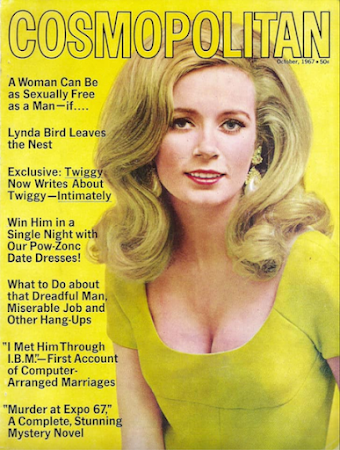Of the eighteen Gilbert Parker screen adaptations, The Money Master is the only one to be undertaken by the author himself. In his filmography, it follows closely behind Behold My Wife! (1920), a George Melford production based on the author's 1893 bestseller The Translation of a Savage.
That Behold My Wife! was Hollywood's second adaptation of the novel in seven years speaks to the author's popularity. A third adaptation followed.
But this post is about The Money Master... or not. The advertisement at the top of this post comes from an advert Paramount placed in the March 1921 edition of Motion Picture News.
 |
| cliquez pour agrandir |
Apologies for the the spoiler.
The Money Maker concerns Jean Jacques Barbille, the fortunate heir to generations of wealth grown in rural Quebec. He takes some of those riches to Paris, where he is not recognized as the man of importance he believes himself to be. As noted in last week's review, his reception outside the French capitol meets expectations, though this is to do with capital (apologies, again). On his return voyage aboard the Antoine, Jean Jacques meets the beautiful Carmen Delores and her ne'er-do-well father. The two are fleeing Spain on account of papa Sebastian backing the losing side in Spain's recent civil conflict. The Antoine strikes a submerged iceberg off the shore of Gaspé. Jean Jacques is rescued by Carmen and the two marry.
Flash forward thirteen years. Jean Jacques lives at the family home, Manor Cartier in the parish of St. Saviour's, with Carmen and their little girl Zoé. A happy soul, his passion for business has come to consume and he is taking family life for granted.
No, that's unfair. Jean Jacques dotes on Zoé, who loves him so much.
Mme Barbille has been sneaking around with master carpenter George Masson, whom M Barbille had hired to construct a flume. Once the project is completed, the lovers plan to flee the parish.
 |
| George and Carmen as imagined by illustrator André Castaigne. |
I won't go into their exchange except to say that it is the very best part of the novel.
George jilts Carmen. Though Jean Jacques forgives his wife, she disappears, leaving her daughter behind.
We flash forward again, this time to Jean Jacques' fiftieth birthday, where he realizes that Zoé has fallen in love with Gerard Fynes:
He was English – that was a misfortune; he was an actor – that was a greater misfortune, for it suggested vagabondage of morals as well as of profession; and he was a Protestant, which was the greatest misfortune of all.
Jean Jacques goes into a complete tailspin. The modest growth of his inherited wealth is reversed. The decline is hastened by his thieving father-in-law, a dishonest cousin, and a fire that destroys his flour mill. Rather than declare bankruptcy or accept financial aid from the widowed Virginie Poucette, he allows creditors to move in. All Jean Jacques manages to save for himself is a bird cage that had belonged to Carmen and Zoé's pet canary. With nothing to anchor him to St Saviour's, Jean Jacques leaves for Montreal where – quite by chance – he encounters Carmen on her deathbed. In her last moments, they reconcile. Our hero then sets out for the Canadian west, where there had once been a sighting of Zoé and her husband.
Because this synopsis is taking far too long, I won't go into Jean Jacques' attempted murder of Carmen's last lover, and will instead cut to the discovery that he has a granddaughter. The Protestant actor father is dead, Zoé died shortly after childbirth, and the baby is now with a wealthy woman who'd been unable to conceive.
I won't go into their exchange except to say that it is the very worst part of the novel.
For reasons both unclear and unconvincing, Jean Jacques leaves his granddaughter, never to see her again. He marries Virginie Poucette and lives his remaining years on three hundred and twenty acres of land "near the Rockies" he'd bought for Zoé decades earlier.
The comparison with A Wise Fool will be much shorter because I haven't seen it – who has? – and so rely on century-old reviews. The most detailed, found in the 3 June 1921 edition of Variety, suggests that the film followed the plot of the novel quite closely up to the point at which Jean Jacques loses his fortune. This includes a scene in which he destroys the guitar left behind by the absent Carmen.
 |
| James Kirkwood as Jean Jacques Barbille. |
Had Parker read McTeague?
The Variety reviewer was none too impressed, summing up all that follows in just two sentences:
For the film, Parker cut the three deaths and the very existence of Zoé and Gerald's daughter.
Would that we could see that film! I'm curious as to its depiction of life in rural Quebec, much praised in by American critics, and the character Virginie Poucette. Played by Californian Truly Shattuck, the Canadien isn't mentioned in so much as one review I've found.
Should be be concerned about Virginie?
Gilbert Parker knew what he was doing. As early as 1921, he recognized the Hollywood Ending.
I expect Virginie did just fine.
Behold the Translation of a Savage on Film!


















































